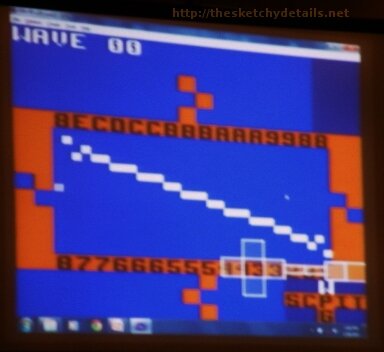One of the guests at MangaNEXT was Chipocrite (aka Paul Weinstein), a chip music artist. Chip music is an interesting and often misunderstood way of producing music. I avoid the term style for good reason: it’s not one. It’s more of a catchall term for a way of creating music.
Chip music basically uses old computers or video game systems to make music. The most common choice is the Game Boy, though it is not the only option. Software is used to control and manipulate the abilities of the basic sound board to create loops of melodies, rhythm, waves, and effects that stack up to form music. It’s a restrictive medium that results in a lot of creative manipulation to make the music work. Think of it like using a really small synthesizer.
Chipocrite ran two panels at the convention explaining and demonstrating how to make chip music on the Game Boy. He described the process as “problem solving” songwriting and stressed that the process does not involve hacking. There are other music creation methods based in hacking. This is not one of them. Hacking is a possibility, but not really for the music creation process itself.* Think adding a light behind the Game Boy screen so you can play the music live. There’s really no way to expand on the sound capabilities of the system itself.
The software used is called Little Sound DJ. It’s a tracker interface, meaning it’s designed to piece the music together and follow it as it plays. Chip music is primarily a writing medium. It’s possible to perform with the software, but the bulk of the work is planning. What Little Sound DJ does is give you access to the the sound board on the Game Boy.

The wave control screen on Little Sound DJ.
Think of it like this. Do you remember playing games on a Game Boy? Even if a game had a musical score, it was very limited and probably only took up one track. All of the sound–objects, movement, fighting, blips on the menu screen, music, etc.–was built on these four channels. I’ve embedded an example to the right. Once you listen to even a short bit of the Kirby’s Dream Land 2 music, you’ll realize that chip music isn’t hacking. All people like Chipocrite are doing is using the tools that Nintendo themselves put into place to create Game Boy soundtracks.
The more I learned about the process, the more I started to wonder how live performance would actually work. People see chip music performances at concerts, cons, and festivals. What could these musicians do once the the songs are written and ready to go?
Chipocrite was asked about this and kindly improvised a live demo of how he could manipulate his song “I Quit” for a live performance. Forgive the shakiness of the video at first. I arrived to the panel late and didn’t want to cause a further distraction by whipping out the tripod or running around the room for a better vantage point.
How an artist chooses to write, use, and perform chip music is up to them. Chipocrite manipulates the tracks live and has also started to incorporate electric bass into his performances. He also started performing with a band called Cheap Dinosaur that uses chip music a another instrument like drums or guitar. Since the concept of chip music is a tool used to create music, the possibilities seem endless.
*Actually, you could hack the Game Boy to create sounds. You just wouldn’t be able to manipulate them through software anymore. It’s called circuit bending and it’s a discussion for another time.
Thoughts? Love to hear them.



